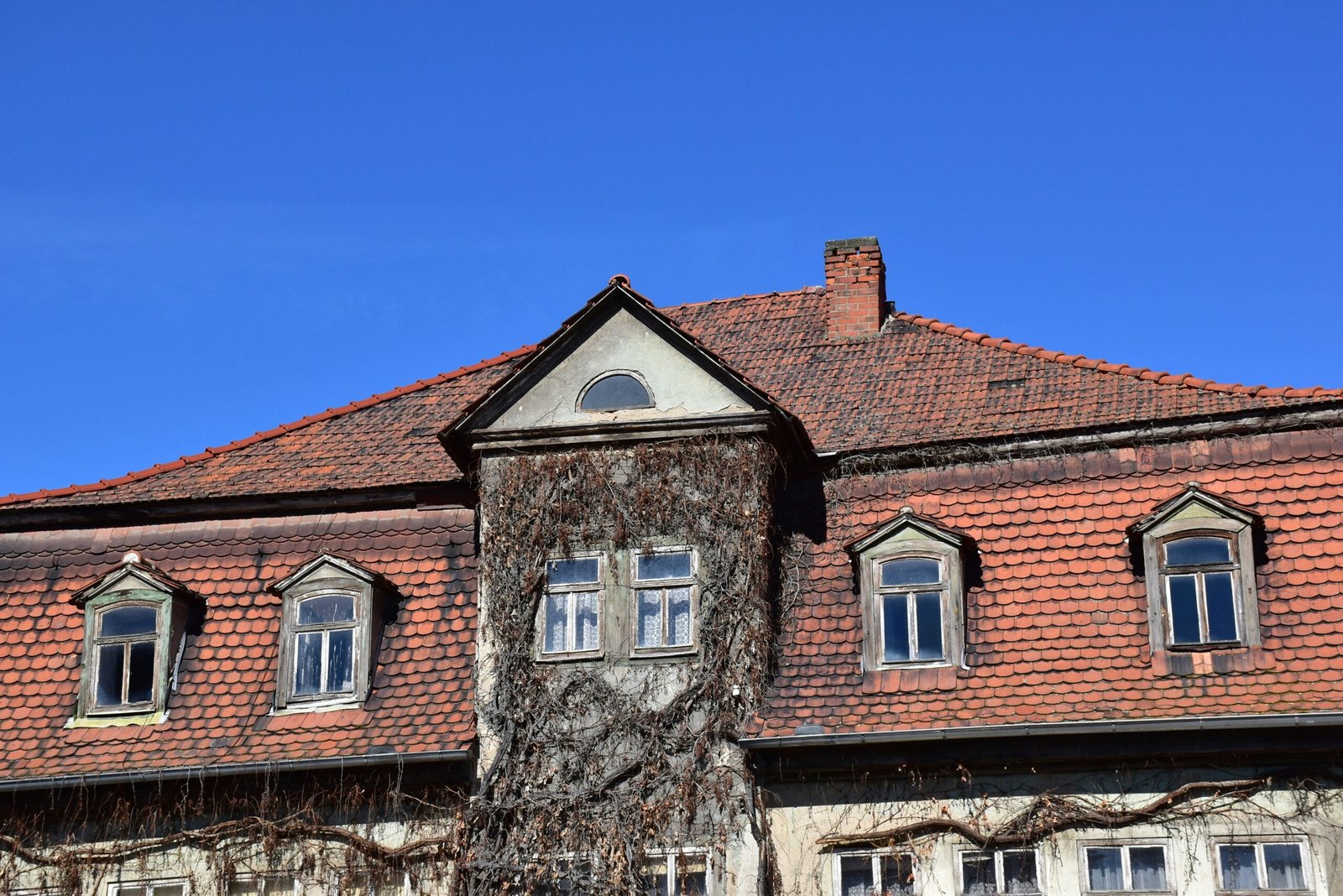Introduction to Chimney Repair Maintenance
A well-maintained chimney is crucial for the safety and efficiency of any household that utilizes a fireplace. Regular chimney maintenance has a significant impact on preventing potentially severe issues, safeguarding your home, and ensuring the longevity of your chimney structure. Over time, chimneys are exposed to various elements, including weather conditions and the natural wear and tear from the combustion process. Such factors can lead to significant deterioration if not addressed promptly.
Inadequate maintenance can result in blockages, inefficient smoke venting, and an increased risk of chimney fires. Blocked flues, for instance, not only impair the chimney’s functionality but also pose a serious health risk due to the accumulation of dangerous gases like carbon monoxide. Furthermore, creosote buildup, a byproduct of burning wood, can combust at high temperatures, leading to destructive chimney fires. It is paramount that homeowners prioritize routine inspections.
Conducting timely repairs and consistent maintenance checks can substantially mitigate these risks. Addressing signs of damage early, such as cracked or damaged bricks, can prevent more severe structural issues and help maintain the chimney’s integrity. Damaged brickwork, in particular, can compromise the chimney’s stability and create entry points for moisture, accelerating the deterioration process.
Moreover, regular inspection and maintenance can be cost-effective. By identifying and troubleshooting minor issues before they escalate, homeowners can avoid potentially expensive repairs or replacements. Timely intervention not only ensures the chimney operates efficiently but also extends its lifespan, maximizing the value of the initial investment.
In essence, proactive chimney care is an essential component of home maintenance responsible for ensuring safe and efficient fireplace use. Homeowners must be aware of and attentive to the signs indicating a need for chimney repair to maintain both their property’s safety and functionality. Regular inspections and timely repairs form the cornerstone of effective chimney maintenance.

Common Signs of Chimney Damage
One of the most noticeable indicators of chimney damage is the presence of cracked or spalling bricks. Spalling occurs when moisture infiltrates the bricks and forces the surface to peel, flake, or fall off. This process not only alters the structural integrity of the chimney but can also lead to severe aesthetic issues. Cracked bricks are often manifest signs of weather exposure or the result of structural stress, which can further magnify if left unaddressed.
Deteriorating mortar joints are another telltale sign of chimney damage. Mortar, the binding material between bricks, is prone to wear out more quickly than the bricks themselves. Weakened mortar joints can allow water to seep into the chimney, causing more extensive damage over time. If the mortar begins to crumble or display significant gaps, it signals the need for immediate repair.
Efflorescence, a white staining that sometimes appears on the brick surface, usually points to water problems in the chimney. This crystalline deposit results when water-soluble salts in the brickwork migrate to the surface due to water exposure. While efflorescence itself is not the problem, it is an indicator of excessive moisture, which could lead to more severe concerns like spalling or interior water damage if not addressed.
Rust on the damper or firebox components often signifies trouble. Rust suggests that moisture is present, which can result from compromised brickwork or poor capping of the chimney. Rust weakens metal parts, making them less efficient and reliable, potentially hindering the functionality of your chimney system.
Interior water damage manifests in various ways, such as stained walls or ceilings adjacent to the chimney, musty odors, or even mold growth. When water infiltrates the chimney system, it can trickle down into living areas, leading to significant internal damage. This internal water damage is often a cumulative effect of unresolved, smaller chimney issues like cracked bricks or missing mortar.
Understanding the Causes of Brick Damage
The structural integrity of a chimney largely hinges on the condition of its bricks. Over time, various factors can lead to brick damage, necessitating timely repair to prevent more extensive harm. One of the primary causes of brick damage is weathering. Constant exposure to the elements, such as rain, wind, and sun, progressively wears down the bricks. This natural degradation process can weaken the structure, making it susceptible to further damage.
Freeze-thaw cycles also play a significant role in brick deterioration. During colder months, water can seep into small cracks and crevices in the bricks. When temperatures drop below freezing, this water expands as it turns to ice, exerting pressure on the bricks and mortar. Repeated freeze-thaw cycles can cause significant cracking and crumbling, compromising the chimney’s stability.
Water infiltration is another critical factor contributing to brick damage. Moisture can penetrate the masonry through various routes, including the chimney cap, flashing, or the bricks themselves. Over time, this infiltration can lead to efflorescence—white, powdery deposits caused by salt deposits from evaporating water. Prolonged exposure to moisture weakens the bricks and mortar, potentially causing spalling, where the brick surface peels or flakes off.
Inadequate construction or repair work can exacerbate brick damage. Poor-quality materials or improper techniques during the construction or repair of the chimney can hasten its deterioration. For example, using low-quality mortar or bricks that are not suited for the specific environmental conditions can lead to premature damage. Additionally, repairs not conducted by a professional might lack the necessary precision, leading to weak points that can fail over time.
Understanding these causes of brick damage is crucial for homeowners in maintaining their chimneys. By recognizing these factors, one can take preventative measures and seek expert chimney repair services to address damage before it escalates, ensuring the longevity and safety of the chimney structure.
Tools and Materials Required for Chimney Repair
Repairing a chimney with damaged brick necessitates the use of specific tools and materials to ensure the repair is effective and long-lasting. Below is a comprehensive list of tools and materials required for chimney brick repair, along with their purposes in the repair process.
Masonry Hammer: This specialized hammer is essential for breaking away damaged bricks and mortar. Its heavy head provides the force needed to effectively remove deteriorated masonry components.
Chisel: A chisel is used in conjunction with the masonry hammer to carefully chip away damaged brick and mortar. Precision is crucial in this step to avoid causing harm to the surrounding structure.
Wire Brush: After removing the damaged materials, a wire brush is employed to clean the brick surfaces. This ensures that there is no dust or debris left, which could affect the adhesion of the new mortar.
Trowel: A trowel is a fundamental tool in masonry work. It is used for applying and shaping mortar when setting replacement bricks. A high-quality trowel helps achieve a smooth and even application.
Replacement Bricks: These are the new bricks that will replace the damaged ones. Ensuring they match the size and aesthetics of the existing bricks is important for maintaining the chimney’s structural integrity and visual appeal.
Mortar Mix: Mortar is the binding material that holds the bricks together. A good mortar mix is crucial for the durability of the repair. It should be mixed to the appropriate consistency to ensure strong adhesion and stability.
Safety Gear: Safety is paramount when performing any type of masonry work. Essential safety gear includes work gloves to protect hands, safety goggles to shield eyes from dust and debris, and a dust mask to prevent inhalation of fine particles.
Each of these tools and materials plays a vital role in the successful repair of a chimney with damaged brick. Proper preparation and execution using the right equipment will help ensure that the repair is both effective and lasting.
Step-by-Step Guide to Chimney Brick Repair
Repairing chimney bricks is a meticulous process that requires careful attention to detail. Start by prioritizing safety: ensure you wear protective gear such as gloves, safety goggles, and a dust mask. Additionally, use scaffolding or a secure ladder to access the chimney safely, especially when working at significant heights.
The next step involves cleaning the damaged area. Use a wire brush to remove any loose debris, soot, or old mortar from the brick surface and the surrounding area. Thoroughly clean the area to provide a solid foundation for the new mortar, which will enhance the longevity of the repair.
After preparing the area, proceed by removing the damaged bricks. Use a chisel and hammer to carefully break and remove the damaged bricks, taking care not to damage the surrounding bricks. Once the bricks are removed, clean the remaining cavity to ensure no loose materials are left behind.
Now, prepare the mortar mix according to the manufacturer’s instructions, ensuring it has a consistent texture. Using a trowel, apply a layer of mortar to the base of the cavity where the new bricks will be placed. Position the new bricks firmly into the mortar, ensuring they are level and aligned with the surrounding bricks. Allow some mortar to ooze out and smooth it with the trowel to create a uniform appearance.
Once the new bricks are securely placed, fill in the gaps around them with additional mortar and use a pointing trowel to smooth the joints. Make sure the mortar seals tightly around the bricks, which helps prevent water infiltration and further damage.
For finishing touches, allow the mortar to cure effectively by keeping the repair area damp for a few days. This helps prevent cracks in the mortar. Additionally, consider applying a water-resistant sealant to the chimney to protect it against future damage.
By following these steps and taking the necessary precautions, you can ensure a long-lasting and effective chimney brick repair that safeguards your structure from further deterioration.
When considering whether to repair a chimney with damaged brick, it is crucial to identify scenarios where professional intervention becomes indispensable. The necessity for expert assistance generally emerges when the damage extends beyond minor cosmetic issues, encompassing widespread degradation or structural instability. Chimneys with significant brick deterioration, severe mortar joint decay, or visible structural shifts demand immediate professional evaluation to prevent further damage and potential hazards.
One of the primary indicators requiring professional attention is widespread damage. If your chimney exhibits extensive cracks, spalling, or missing bricks, the structural integrity may be compromised. A professional mason possesses the expertise to assess the extent of damage accurately, ensuring that appropriate repair strategies are implemented. Furthermore, widespread damage often signifies underlying issues, such as water infiltration or foundation problems, which a skilled chimney specialist can identify and address efficiently.
Structural issues represent another critical aspect necessitating professional chimney repair. Chimneys subjected to significant lean or visible displacement pose a severe safety risk. Engaging a professional is essential in these situations, as they have the necessary tools and knowledge to conduct a thorough inspection, diagnose the root cause, and perform corrective measures to restore stability. Structural repairs often involve intricate procedures, such as rebuilding or realigning sections of the chimney, which should only be undertaken by trained professionals to ensure long-term durability and safety.
High chimneys, typically found in multi-story buildings, present additional challenges that necessitate professional handling. Repairing a tall chimney involves working at considerable heights, which introduces risks associated with falls and access difficulties. Professionals possess specialized equipment and training to navigate these challenges safely. Utilizing scaffolding, harnesses, and other safety apparatus ensures both the safety of the repair personnel and the integrity of the repair work.
In summary, recognizing the signs that warrant professional chimney repair, such as widespread damage, structural issues, and high chimneys, underscores the importance of prioritizing safety and expertise. Engaging qualified professionals not only ensures effective repair but also mitigates potential risks associated with improper or incomplete restoration efforts.
Preventative Measures for Future Chimney Maintenance
Preventive measures are indispensable in safeguarding a chimney’s long-term structural integrity. Consistent inspections are paramount in detecting early signs of wear and tear in the chimney brick. It is advised to conduct a comprehensive chimney inspection at least annually. Professional inspections can reveal potential issues like small cracks, deteriorating mortar, or any signs of water damage, enabling early intervention before they escalate into major repairs.
Waterproofing is another critical aspect of chimney maintenance. The bricks and mortar that make up your chimney are highly porous and capable of absorbing moisture. Over time, water infiltration can cause significant damage, leading to cracks and weakening of the structure. Applying a specialized waterproof sealant to the exterior bricks can greatly reduce this risk. Make sure to use vapor-permeable sealants which allow the moisture within the bricks to evaporate while preventing external water from being absorbed.
The installation of a chimney cap is an effective way to protect the chimney from various environmental elements. A chimney cap serves multiple functions: it prevents rainwater from directly entering the chimney, blocks debris like leaves and twigs that could obstruct airflow, and deters animals from nesting inside the chimney. Ensure that the chimney cap is made from durable materials such as stainless steel or copper for longevity and optimal performance.
Proper ventilation is crucial in maintaining a healthy chimney. Adequate airflow minimizes the buildup of creosote, a highly flammable substance that can accumulate in the flue. It also helps in reducing moisture levels within the chimney, thereby decreasing the potential for brick damage. Regularly cleaning the chimney flue and ensuring it is free from blockages keeps the ventilation system working efficiently.
In addition to these measures, periodically checking the flashing around the chimney, which seals the joint between the chimney and the roof, can prevent water intrusion. Maintaining the chimney structure involves a proactive approach, combining regular inspections, waterproofing, high-quality chimney caps, and efficient ventilation. These proactive steps will significantly extend the life of your chimney and stave off potential damages that necessitate extensive repairs.
Conclusion: The Importance of Timely Chimney Repair
In addressing the complexities surrounding chimney damage, the necessity for timely chimney repair becomes unequivocally clear. Early detection of issues such as cracked masonry, loose bricks, and mortar deterioration is critical in preventing further degradation. An attentive approach to chimney maintenance not only sustains the structural integrity of your chimney but also safeguards your property from the risks of water infiltration, flue blockages, or even potential fires.
Prompt action in repairing any visible damage ensures the efficient functioning of your chimney system, thereby promoting better indoor air quality and enhancing heating efficiency. In addition to mitigating immediate safety concerns, consistent upkeep extends the lifespan of your chimney, proving more cost-effective in the long run.
By investing in regular inspections and addressing issues head-on, homeowners can avoid costly repairs and contribute to a safer, more comfortable living environment. The benefits of proactive chimney maintenance and repair are manifold, underscoring the importance of vigilance against any signs of damage.
In summation, maintaining a safe, efficient, and enduring chimney system hinges on timely and effective repairs. Prioritizing these actions ultimately fosters a more secure and pleasant home atmosphere for all occupants.


